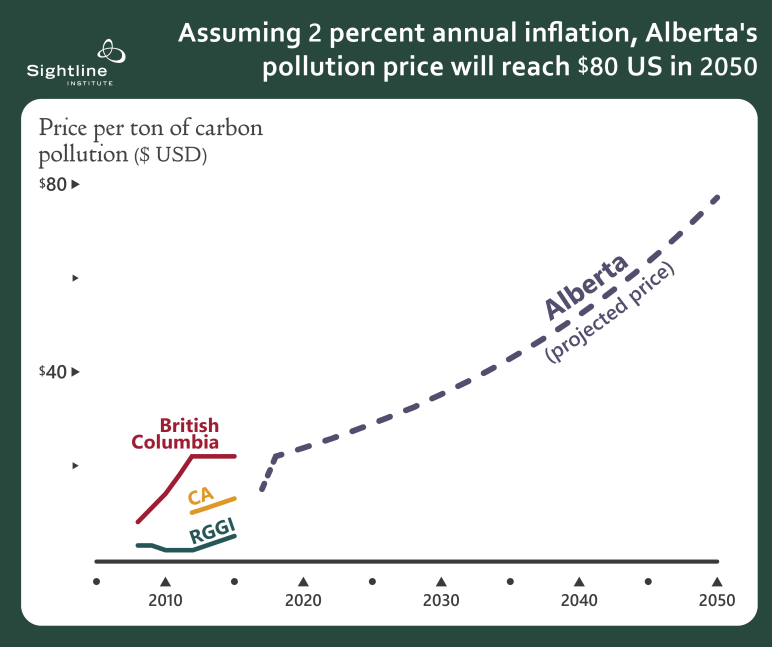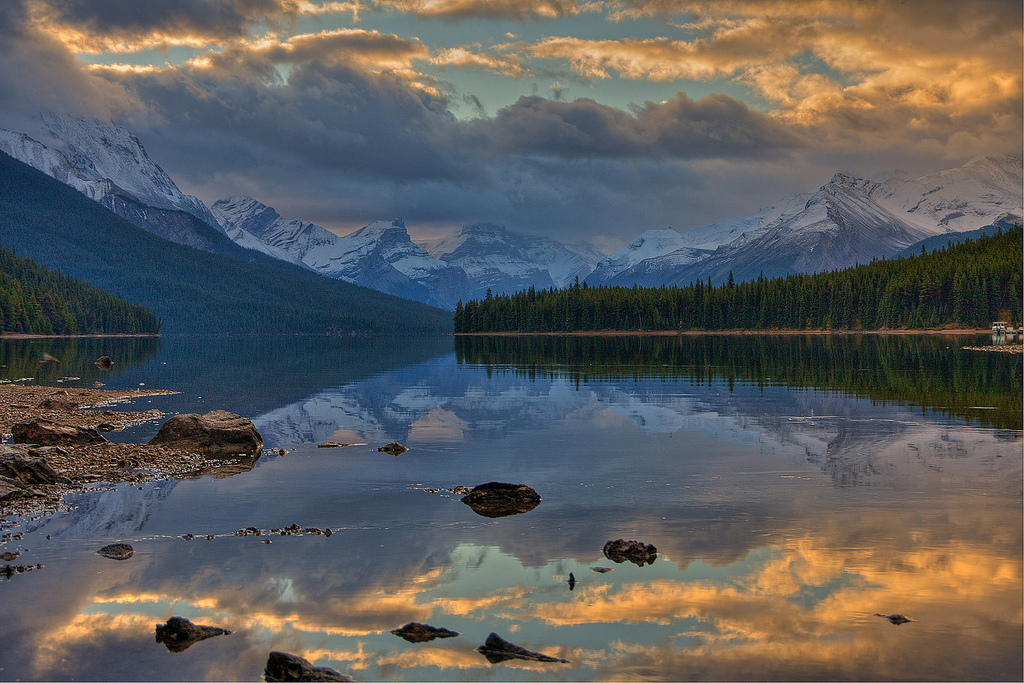Author’s note: Unless otherwise indicated, all dollar amounts are in Canadian dollars.
Back in May, voters in Canada’s most conservative province got fed up with 44 consecutive years of conservative rule and elected the New Democratic Party (NDP) (NDP is to the left of the Liberal Party that won the federal election in October). The new leadership wasted no time in forming a Climate Leadership Panel to engage people and businesses across the province (p. 14) through public open houses, online submissions, technical stakeholder workshops, and meetings with Aboriginal communities. They then used these sources’ input to draft a comprehensive climate plan, appropriately peppered with quotes from Albertan stakeholders. The panel drafted a strong climate plan with broad support in just five months. Wow.
Here’s what the plan will do:
1) Put a steadily rising price on pollution.
The centerpiece of the plan is an economy-wide price on carbon pollution. Alberta’s very largest emitters—over 100 million metric tons per year—already pay for their pollution, but that only accounts for about 45 percent of the province’s emissions. The plan recommends extending that price to 78-90 percent of the province’s emissions. The price would be $20 per ton in 2017 (around US $15), $30 per ton in 2018 (around US $22), and increase at 2 percent plus inflation each year after that. If inflation averages 2 percent a year, the price will reach US $80 per ton in 2050. This would make it the most effective pollution price in North America.

2) Fund a “consumer rebate” so that most Albertans will end up with more money in their pockets.
Alberta estimates that the pollution price will generate about $3 billion in 2018 (p. 42) and more than $5 billion in 2030. But the pollution price will cost an average Albertan household about $40 more per month and an additional $80 per month in 2030 (p. 44). The plan recommends giving a bi-annual “consumer rebate” to households in the bottom 60 percent of income. The rebate would be enough to offset the impact of a carbon price on those households, ensuring they have as much or more money as they had when pollution was free. The rebate or dividend would be about $500 per year, going up over time as the pollution price goes up. Alberta would use around 10 percent of the pollution revenue to fund the rebate.
3) Invest in clean energy technology and infrastructure.
The report recommends dedicating about 20 percent of the revenue—$600 million in the first year—to invest in renewable energy, energy efficiency, public transit, and walking and biking infrastructure. These investments will accelerate Alberta’s transition to clean energy. An additional “significant” share will go to research, development, and deployment of new technologies and green infrastructure.
4) Fund “just transition” programs for workers and communities.
Although the panel expects employment impacts to be limited (p. 43), the plan recommends using some revenue to help workers and communities whose jobs are lost as the economy shifts from outdated fuels to clean energy. The just transition program will fund worker training and will help match displaced workers with new opportunities.
5) Fund tax cuts.
With 20 percent of the revenue dedicated to clean energy investments, around 10 percent earmarked for rebates, and another unspecified but significant chunk reserved for technology development and deployment, around half the revenue—an estimated $1.5 billion in the first year—is still on the table. The plan recommends the balance should fund “across-the-board tax reductions” (p. 44) similar to British Columbia’s pollution-funded tax cuts or Washington’s Initiative 732’s proposed tax cuts.
6) Phase out coal and encourages renewable energy.
Alberta will replace 50-75% of its coal use with renewables and the rest with efficiency and natural gas.
Alberta gets 55 percent of is power from coal (p. 47). Coal is already dying, but Alberta’s plan will phase it out faster, retiring all of the province’s 18 coal-fired power plants by 2030. Alberta will replace some 50-75 percent of the coal (p.30) with renewable power and the rest with efficiency or natural gas. By 2030, Alberta will get 30 percent of its electricity from renewable sources.
7) Limit pollution from oil sands.
The Alberta plan would limit tar sands operations emissions to a maximum of 100 million tons per year. This gives the industry some headroom from its current operational emissions of 70 million tons per year, while driving the industry towards technological and operational improvements.
8) Target methane emissions from oil and gas operations.
Methane causes 28-36 times more warming than carbon dioxide over 100 years, and Alberta’s oil and gas sectors dump a lot of methane into the atmosphere. Fugitive methane emissions, which leak out of mines, drill holes, and pipelines, will escape the carbon price, so Alberta is convening a process (p. 59) to devise a policy to specifically limit fugitive methane emissions.
Excellent policy, impressive speed
Alberta took advantage of existing carbon pricing experience throughout North America to design a program with a strong pollution price and wise use of the revenue: helping households and workers, investing in green infrastructure, and reducing other taxes. If Alberta—the tar sands capital of North America—can do it, surely Oregon and Washington can, too!
[button link='{“url”:”http://www.sightline.org/2014/03/11/all-you-need-to-know-about-bcs-carbon-tax-shift-in-five-charts/”,”title”:”Interested in more? See all you need to know about BC|apos;s carbon tax shift, in 5 charts.”}’ color=”green”]


Comments are closed.